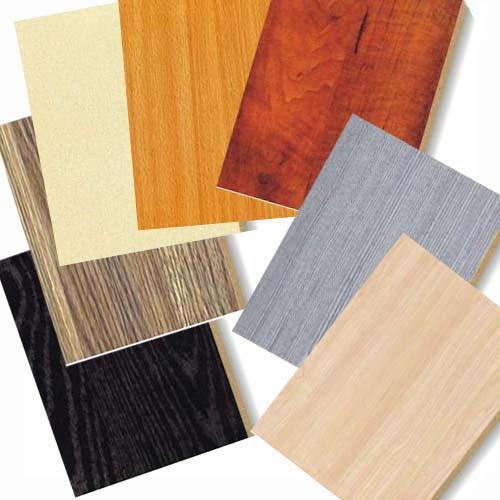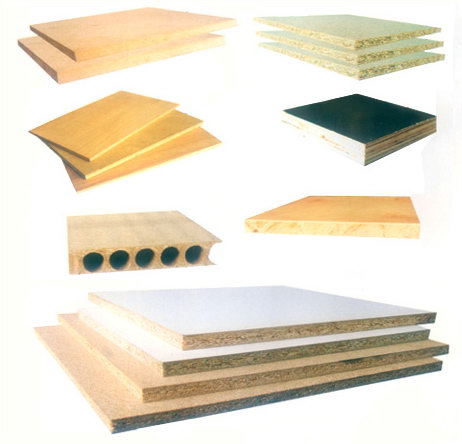2016 production process of ten brands of health plate Wan Zhoulin artificial board
 The production process of wood-based panels is relatively complicated, but generally can include the following five main processes:   First, cutting For the processing of raw materials and the final processing of the products, cutting processes, such as rotary cutting, planing, cutting of wood chips and shavings, grinding and separation of fibers, and sawing and sanding in final processing, are applied. Cutting the wood into units of different shapes and recombining them into various sheets in a certain way can improve certain properties of the wood, such as anisotropy, heterogeneity, swelling and shrinkage. The plate composed of large units has higher mechanical strength, and the plate composed of small units has better homogeneity.  Second, dry Drying includes veneer drying, shaving drying, fiber drying in a dry fiberboard process, and heat treatment of wet fiberboard. Drying process and process control are different from finished drying. The process control of the drying of the material is based on the relative humidity of the drying medium, and care must be taken to prevent the generation of drying stress. The drying of the sheet-like and granular materials used for the wood-based panel is carried out under relatively high temperature, high speed and continuous conditions. At the end of the phase, it is immediately transferred to the deceleration and drying phase. Veneer and shavings are thin, have a large surface area, and have little or no effect on dry stress. In addition, the wood tissue undergoes different degrees of relaxation during the cutting process, and the water diffusion resistance is small, and the law of moisture diffusion inside the wood loses its meaning on the veneer and the shavings. Most of the dry heat sources use steam or combustion gases.   Third, sizing Gluing includes veneer coating, shavings and fiber sizing. Veneer gluing still uses traditional roller gluing in Europe. Since the 1970s, many plywood factories have switched to laminating. Chinese plywood factories also use roller coating. The leaching method is suitable for the process of sizing the intermediate plate and the automated slab. Shavings and fiber sizing are now mainly used by spray glue.  Fourth, molding The blanks of the formed and pressed plywood, the slab forming and pressurization of the particleboard fiberboard are all the molding processes for the manufacture of the artificial board. Pressurization is divided into pre-pressure and hot pressing. It is necessary to pre-press the slab when using a padless system. It keeps the slab from being damaged when it is pushed into the hot press. The hot pressing process is the key process to determine the production capacity and output of the enterprise. The hot pressing equipment commonly used in the wood-based panel industry is mainly a multi-layer hot press. In addition, single-layer large-format hot presses and continuous hot presses are gradually being adopted. The single-layer hot press is used in the particleboard factory. The single-layer laminator can be used in the manufacture of medium-density fiberboard to achieve the combined heating of high frequency and steam, which is beneficial to shorten the pressurization cycle and improve the uniformity of product section density.   Five, ** processing After the final processed sheet is discharged from the hot press, it is subjected to the stage of cooling and moisture content balance, that is, sawing and sanding, and the hard fiber board is subjected to heat treatment and humidity control. According to the requirements of use, some plates need special treatment such as dipping, painting, laminating and edge sealing.  —— END—— Wan Zhoulin plate The core is more than the heart, the real thing, the table is like one! Wan Zhoulin Plate National Service Hotline: 400-8635858 Official WeChat: wzlbc08  A room divider is a screen or piece of furniture placed in a way that divides a room into separate areas. Room Divider Screen,Room Screen,Room Divider Panel,Floding Room Divider,Movable Room Divider,Wooden Room Divider Jinan Tri-Tiger Technology Development Co., Ltd , https://www.jinanfurniture.com


Room dividers are used by interior designers and architects as means to divide space into separate distinct areas.
A room divider for a conference hall.
There are a number of different types of room dividers such as cubicle partitions, pipe and drape screens, shoji screens, and walls. Room dividers can be made from many materials, including wood, fabric, plexiglass, framed cotton canvas, pleated fabric or mirrors. Plants, shelves or railings might also be used as dividers. Portable room dividers have folded wall panels supported on wheels.
Types
In general, room dividers are used in one of these ways:
To divide rooms, creating a more efficient use of the space within the room.
As decorators and/or accent pieces to add character to room space.
To hide areas of different usage or privacy protection
To decorate rooms for better home design effect
Room dividers differ in nature being either:
Permanent as in using wine shelves in restaurants
Built in as in sliding partitions in offices
Portable or temporary as for example in convention centers
Fixed room dividers and hanging room dividers
They may completely obscure as in floor to ceiling dividers, or may allow sight through as for example when plant pots are used to divide areas.
